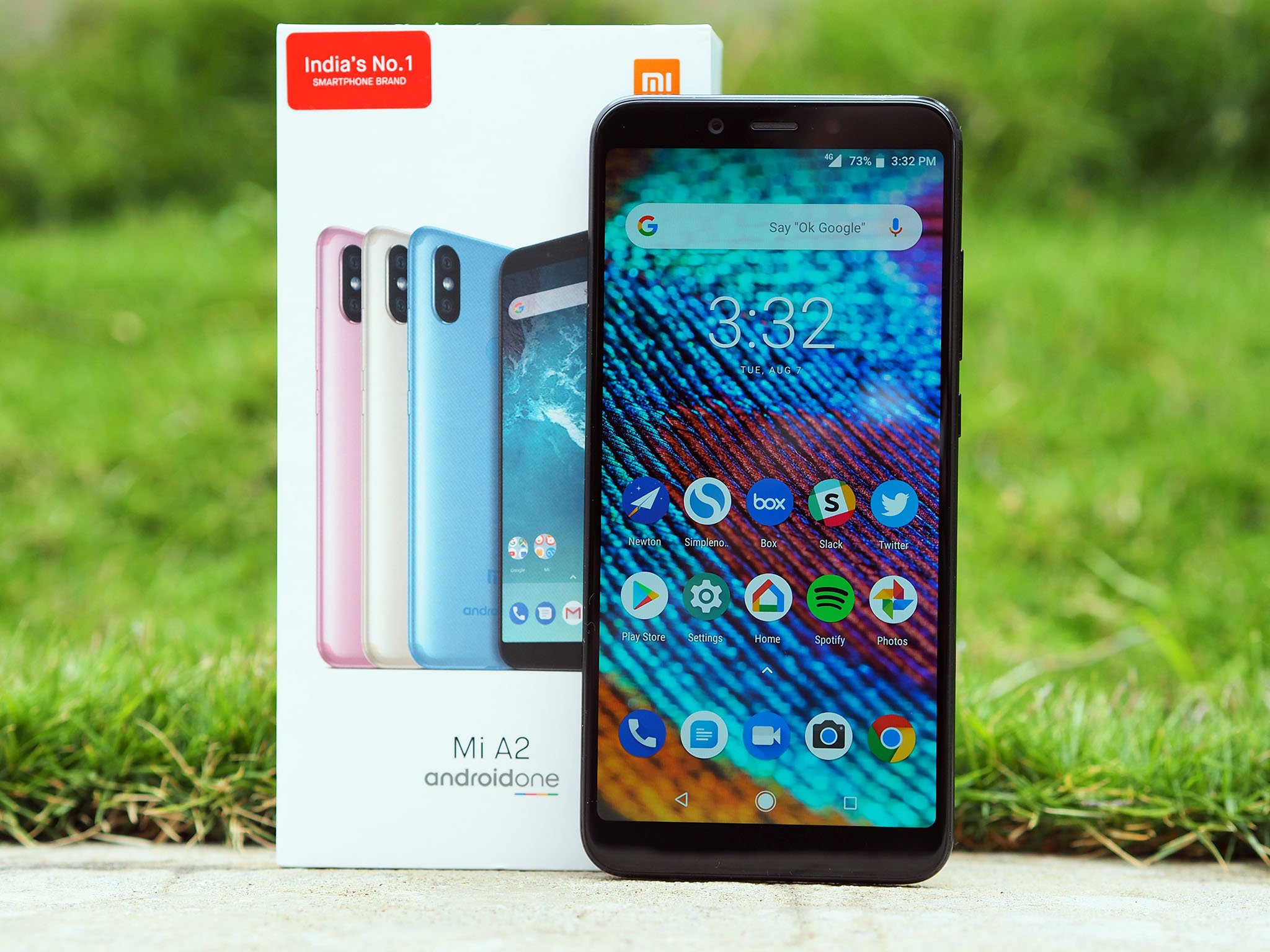Android Central Verdict
Price: ₹16,999 ($250)Bottom line: The Mi A2 continues Xiaomi's now-familiar tradition of offering excellent value. The upgrades from last year make it an enticing option in this category, and the camera in particular is stunning.
Pros
- +
Fantastic value
- +
Impressive hardware
- +
Android One
- +
Great cameras
Cons
- -
Display isn't polarized
- -
No MicroSD slot
- -
No 3.5mm jack
- -
NFC is missing as well
Why you can trust Android Central
The Mi A1 was one of the best phones of 2017. It combined Xiaomi's hardware chops with the simplicity of Android One, resulting in a device that was a delight to use. While the premise of the Mi A1 was great, Xiaomi failed to follow through on a few initial promises — the Oreo update didn't arrive until the start of the year, and when it was rolled out, it was plagued with so many issues that Xiaomi had to pull it.
With the Mi A2, Xiaomi is hoping to learn from last year's mistakes. The phone has vastly superior hardware in the form of a Snapdragon 660, along with an upgraded dual camera at the back and an 18:9 display up front. That said, the Mi A2 loses out on the 3.5mm jack even though it has the same 7.3mm thickness as the Mi A1, and there's no MicroSD slot as well, putting the device at a disadvantage in countries like India.
To offset the lack of expandable storage, Xiaomi is making the 64GB variant the base model for the Indian market. However, that isn't likely to assuage buyers as the Mi A1 also had 64GB of storage and came with a MicroSD slot. So is the Mi A2 worthy of your consideration? Let's find out.
About this review
I (Harish Jonnalagadda) am writing this review after using the Indian retail unit of the Mi A2 for over two weeks in Hyderabad and Delhi. The device picked up a single update over the course of the review, introducing the August 2018 security patch as well as several bug fixes. The unit was provided to Android Central for review by Xiaomi India.
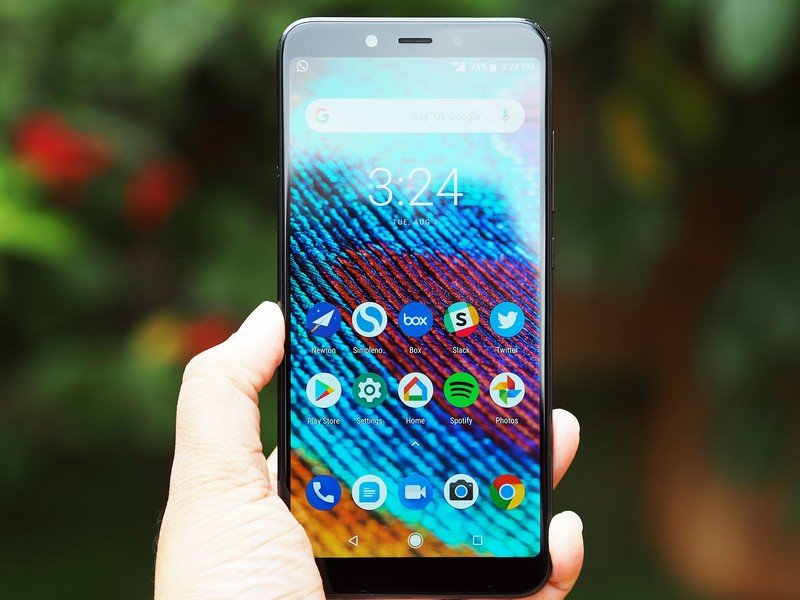
Xiaomi Mi A2 Hardware
The major change on the design front from last year is the introduction of an 18:9 panel. The 5.99-inch IPS LCD display on the Mi A2 offers more screen real estate in a chassis that's marginally taller than the Mi A1. I'm fine with the fact that there are sizeable bezels at the top and bottom; if that's what it takes to avoid the notch, so be it.
The bezels are in part due to the sheer number of sensors located at the front. There are the usual proximity and ambient light sensors next to the front camera, and there's also a LED flash module that sits to the right.
Round the back, you get a dual camera assembly arrayed vertically, and the module juts out considerably from the body, creating a lot of wobble when using the Mi A2 on a flat surface. The fingerprint sensor is located just where your index finger rests, and the sensor itself worked reliably and didn't pose any issues.
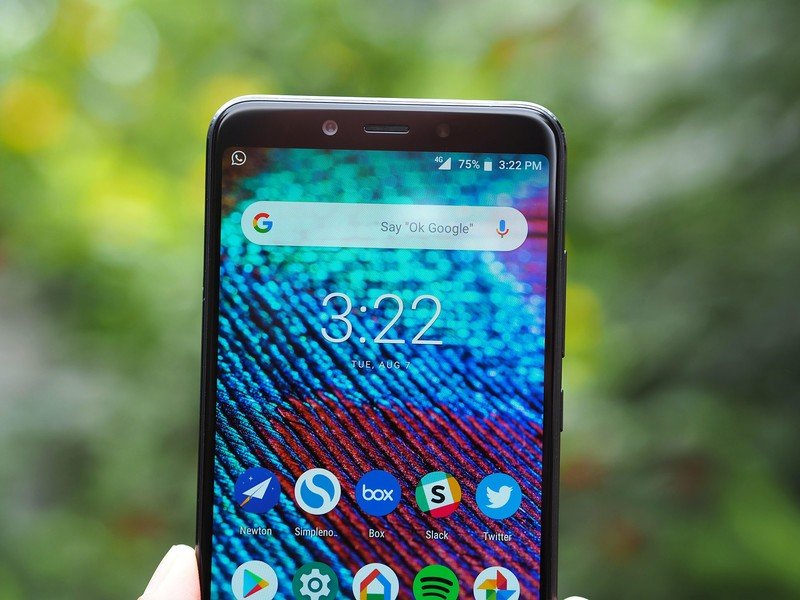
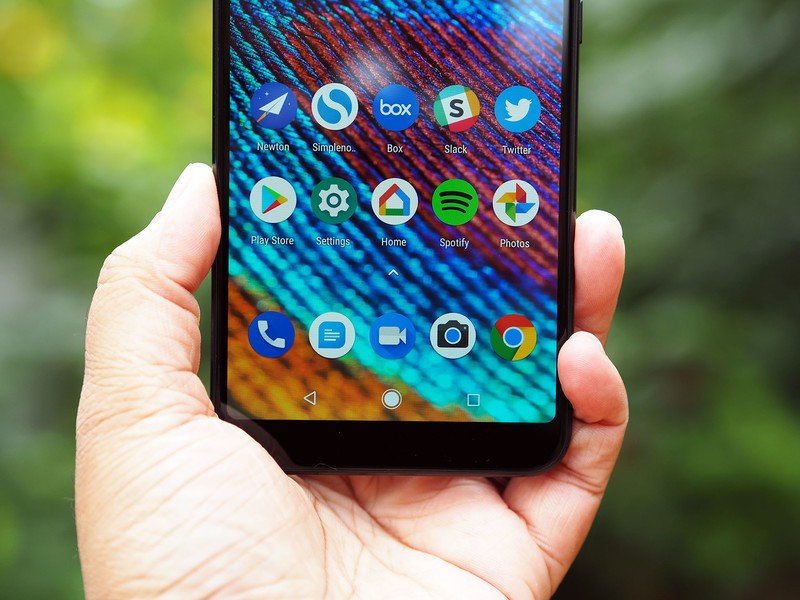
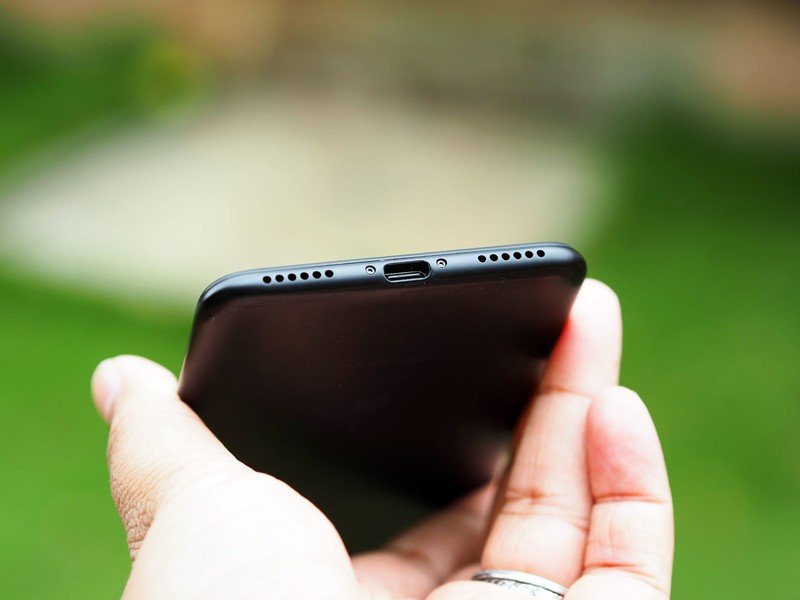
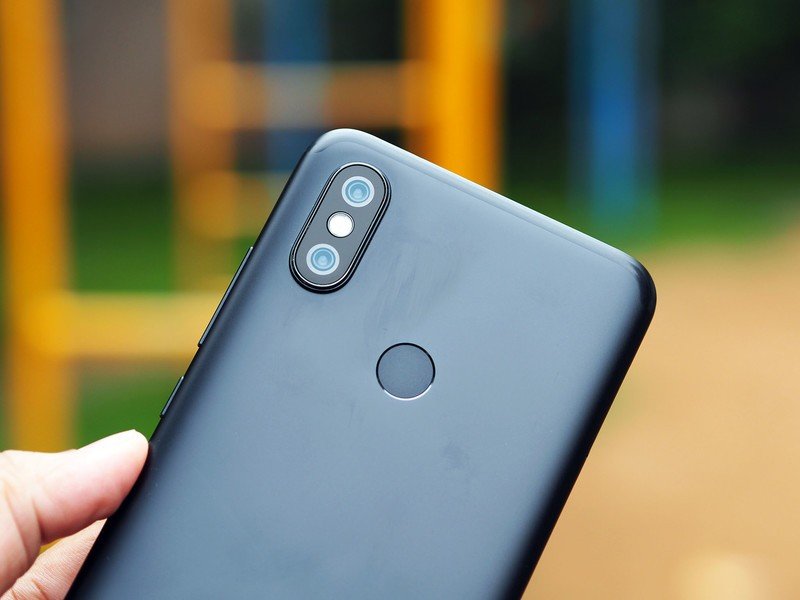
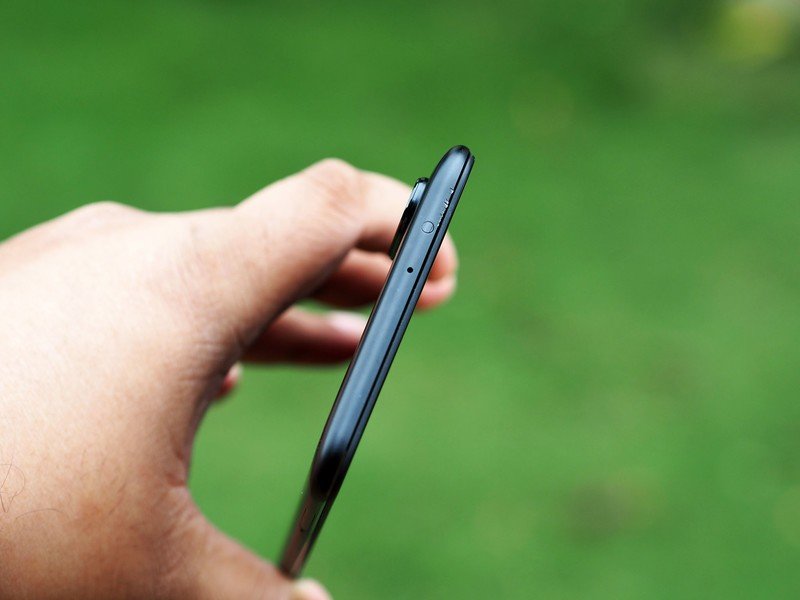
Xiaomi hasn't made any significant changes to its design in the last two years, and that is immediately evident from the moment you start using the Mi A2. The device feels like a smaller variant of the Mi Max 2 as it has the same antenna lines at the top and bottom, and a similar matte finish. Moreover, that dual camera arrangement — which is a splitting image of the iPhone X — needs to go away.
While the Mi A2 may not look very different from its predecessor, it has rounded corners and subtle curves at the back that make it easier to hold. Xiaomi has also retained the IR blaster, but the 3.5mm jack is no longer present.
| Specs | Xiaomi Mi A2 |
|---|---|
| Screen | 5.99-inch FHD+ (2160x1080) IPS LCD |
| Chipset | Snapdragon 660 |
| RAM | 4GB |
| Storage | 64GB |
| Software | Android 8.1 Oreo |
| Rear Camera 1 | 12MP, ƒ/1.75 |
| Rear Camera 2 | 20MP, ƒ/1.75 |
| Front Camera | 20MP, ƒ/2.2 |
| Security | Rear fingerprint |
| Battery | 3000mAh |
| Connectivity | Wi-Fi 802.11 ac, BT5.0 |
| Colors | Black, Red, Gold, Blue |
| Dimensions | 158.7x75.4x7.3mm |
| Weight | 166g |
| Price | ₹16,999 ($250) |
It's clear that Xiaomi's design language is in need of an overhaul. The Mi A2 just isn't exciting when there are glass-backed phones like the Honor 9N that offer a much better design aesthetic.
Coming to the display, the 5.99-inch FHD+ (2160x1080) panel on the Mi A2 is similar to what we've seen on the Redmi Note 5 Pro, but it's missing the display tweaks on offer with MIUI. Colors out of the box are decent, as is the case with sunlight legibility. But my main issue with the device is that the display isn't polarized, so if you're wearing sunglasses, you won't be able to see the screen at all.
There's also an ambient display mode that wakes the screen whenever you receive a notification. It works as advertised, and is one of my favorite features on Android One. The Mi A2 is the first phone in India with Gorilla Glass 5 protection.
The Mi A2 has a single speaker located at the bottom, and it is loud. It isn't as detailed as stereo configurations, but as far as single speakers go, it is one of the loudest I've encountered to date. Calls went through without any hassle, and cellular connectivity was on par with other devices in this category.
Performance
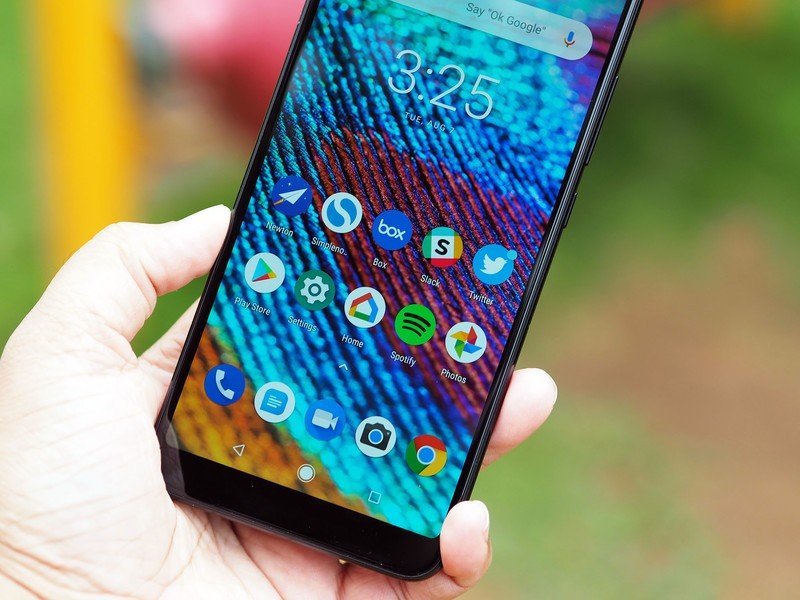
Xiaomi has always been great at delivering excellent value, and the Mi A2 is no different. The Snapdragon 660 makes it one of the fastest phones in this category, and you get 4GB of RAM and 64GB of storage as standard in India (the 6GB version is coming soon). That said, the Mi A2 isn't without its gremlins as I noticed lag and the occasional app crash during the first week of testing. But more on that later.
Barring the few instances of lag, the Mi A2 proved to be a reliable workhorse. Gaming was enjoyable on the phone, and I played Alto's Odyssey as well as PUBG for several hours without any issues. PUBG defaults to medium settings as the Adreno 512 GPU isn't quite on the same level as flagship chipsets, but the overall experience was on par with the likes of the Nokia 7 Plus.
While it isn't as big an issue in India, the lack of NFC will undoubtedly hurt Mi A2 sales in Western markets as it makes the device incompatible with Google Pay. On the subject of features, the omission of the MicroSD slot and the 3.5mm jack will also be detrimental to sales in India.
The Mi A2 is a reliable workhorse, but you'll encounter a few gremlins out of the box.
The Mi A2 will come with 64GB of storage as standard in India, but its predecessor also offered 64GB of internal storage and came with a MicroSD slot. While 64GB of storage is more than enough for most, there will always be a subset of users that will refuse to buy a device that doesn't have a MicroSD slot. And that's fine. Xiaomi has more than enough devices in the budget segment, and the Redmi Note 5 Pro is a better bet for those that want the added features.
The Redmi Note 5 Pro isn't as fast as the Mi A2, the cameras aren't as good, and it won't receive platform updates anywhere as fast, but yes, it has a MicroSD card and a 3.5mm jack. In that context, the lack of expandable storage and headphone jack doesn't seem like a big deal, and it didn't make any difference to the way I used the Mi A2.
Even after downloading a few seasons of Line of Duty from Netflix for offline viewing and most of my Spotify playlists, I had over 10GB of free space left on the Mi A2, and unless you're intent on carrying your entire music collection or several movies around with you, it's hard to fill up the internal storage. And with a plethora of streaming services available combined with affordable 4G plans from Jio and Airtel, there just isn't any incentive to download media anymore.
Of course, your use case may vary significantly from mine, but I've had no issues with the fact that the Mi A2 doesn't have a MicroSD slot. Having made the switch to the MDR-100X, I don't miss the 3.5mm jack either. This isn't the first Xiaomi device I've used that didn't have a headphone jack, and for what it's worth, the Mi A2 paired to my MDR-1000X and other Bluetooth gear around my house without any hassles.
But if you have a lot of wired gear, Xiaomi provides a USB-C to 3.5mm dongle in the box that lets you hook up your headphone jack to the device. Also included in the box is a silicone case that offers basic protection.
Battery life
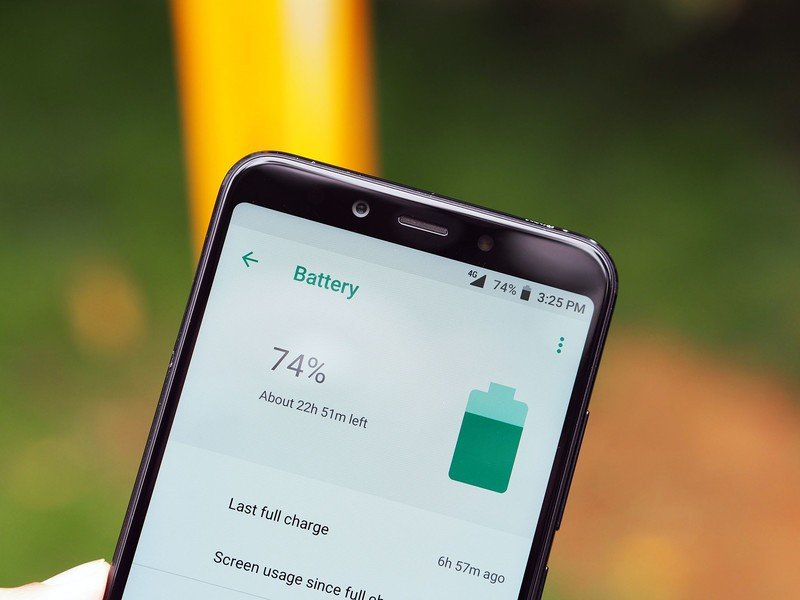
I routinely got a day's worth of usage from the 3000mAh battery on the Mi A2. That was the case even on days where I predominantly used cellular data, and I averaged well over five hours of screen-on-time with usage spread out over the course of a day.
MIUI has a host of battery-saving optimizations that eke out the most from a battery, but Android One has the standard battery saver mode. It still comes in handy when you're looking to extend battery life, but isn't as effective as what MIUI offers. This will change once the Mi A2 picks up the Android Pie update and Adaptive Battery becomes available.
Unlike most Xiaomi phones, the Mi A2 comes with Quick Charge 3.0 out of the box, and the Indian unit supports Quick Charge 4.0 exclusively. However, you'll have to pick up a third-party wall unit to access Quick Charge 4.0 speeds, as the wall charger bundled in the box is the standard 5V/2A unit that Xiaomi includes with its budget phones.
There aren't many reliable Quick Charge 4.0 chargers available in the market today, but I was able to use my Tronsmart Titan's Quick Charge 3.0 ports to charge the Mi A2. It takes an hour and a half to charge the device fully, and if you're in a hurry, you can use Quick Charge 3.0 to go from zero to a 50% charge in just 20 minutes.
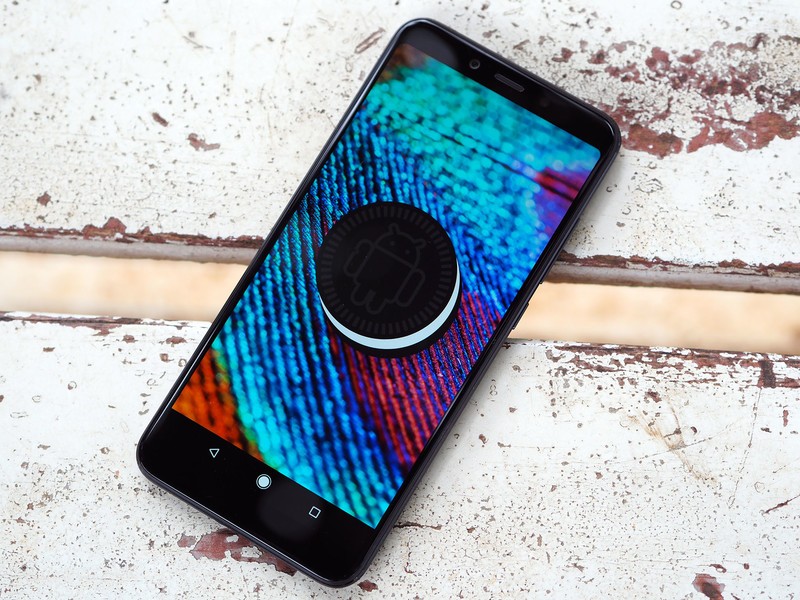
Xiaomi Mi A2 Software
The Mi A2 comes with Android 8.1 Oreo out of the box, with Xiaomi committing to an Android Pie update before the end of the year. As is the case with all Android One phones, the Mi A2 has a clean interface that's close to Google's implementation of Android on the Pixels.
While the interface itself is unchanged, manufacturers have the freedom to include their own apps. The Mi A2 comes with Xiaomi's camera app, along with the MIUI file manager and an app to control the IR remote. Using Android One on a Xiaomi device is just as exciting as last year, but the experience is marred by a few shortcomings.
I encountered lag a few times during initial setup that went on well into the first few days of usage, along with app crashes. There were also times when apps like Box and Slack would just freeze and become unresponsive, and I had to force close them and start up again. It's puzzling to see a phone with such robust hardware exhibit lag, and the Nokia 7 Plus — which is also powered by the Snapdragon 660 and runs Android One — doesn't have any such issues.
It hasn't gotten any less exciting to use Android One on a Xiaomi phone.
Another recurring issue was Wi-Fi connectivity. The Mi A2 would automatically disconnect from my home Wi-Fi network for no reason, and I had to manually reconnect several times over the course of the last two weeks. Then there was the issue with the ringtone — the phone defaulted to vibrate mode whenever it came out of Do Not Disturb.
I would've excused some of the bugs as the usual shortcomings that plague every new device, but with the Mi A1 also facing similar issues last year, Xiaomi needs to do a better job optimizing the hardware for Android One. For what it's worth, the latest update with the August 2018 patch also included a ton of bug fixes, and the interface has become more responsive following the update.
To its credit, Xiaomi seems to be doing a much better job this time around when it comes to updates. The Mi A2 has picked up the August security update earlier this week, so customers purchasing the device can look forward to a day-one update with the latest security patch and a ton of bug fixes.
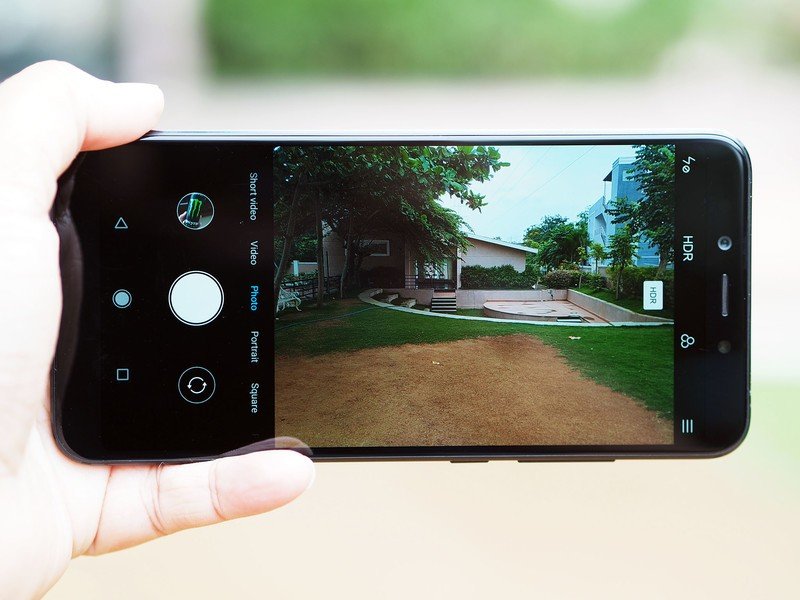
Xiaomi Mi A2 Camera
The Mi A2 comes with two new imaging sensors at the back — a 12MP f/1.75 sensor joined by a 20MP f/1.75 lens. The secondary lens is interesting as it is designed to kick in during low-light shooting scenarios. The camera interface has toggles for the flash, HDR, and live filters; and you'll be able to switch between shooting modes with a swipe left or right gesture.
There's the now-ubiquitous portrait mode, along with a manual mode that lets you select between the regular 12MP sensor or the 20MP low-light shooter. The Mi A2 has a 20MP front camera with Xiaomi's AI features that automatically add beautify effects and remove blemishes. You also get a software-assisted portrait mode for the front camera, and it works pretty well most of the time.


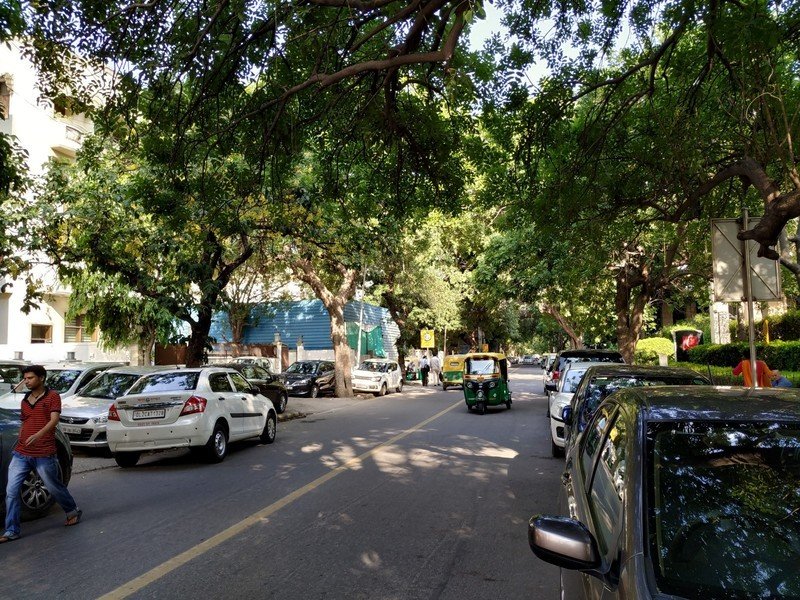

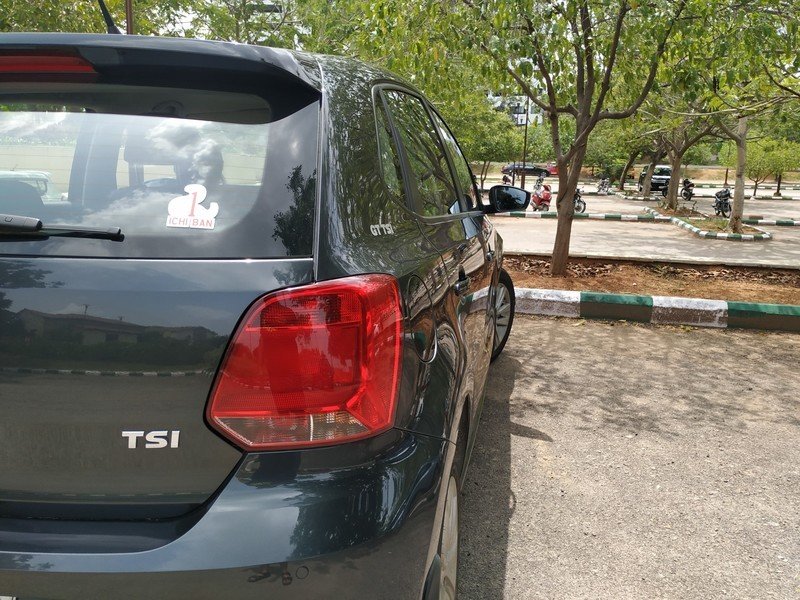
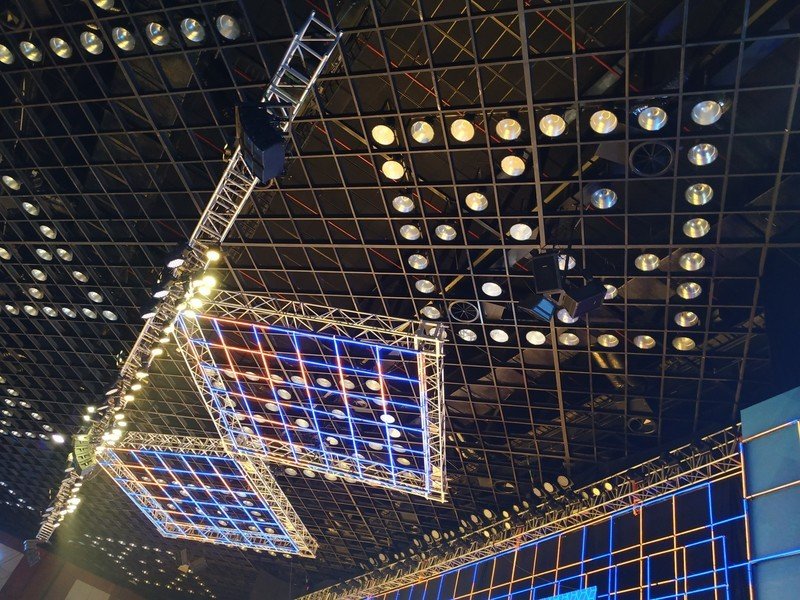





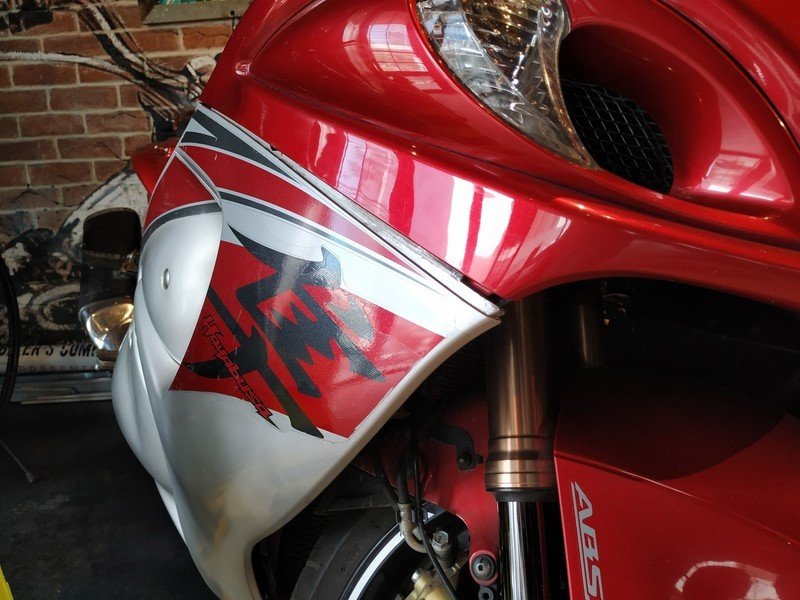




The Mi A2 does a great job in both daylight and low-light shooting conditions, with the resultant images offering plenty of detail, accurate colors, and high dynamic range. The front camera is great for taking selfies, and portrait mode also works reliably well. There's also an LED flash module that does a decent job in near-darkness.
Overall, there's little wrong with the Mi A2 when it comes to the cameras. Xiaomi said earlier this year that its primary focus for 2018 would be improving the camera quality on its phones, and it has managed to deliver on that brief.
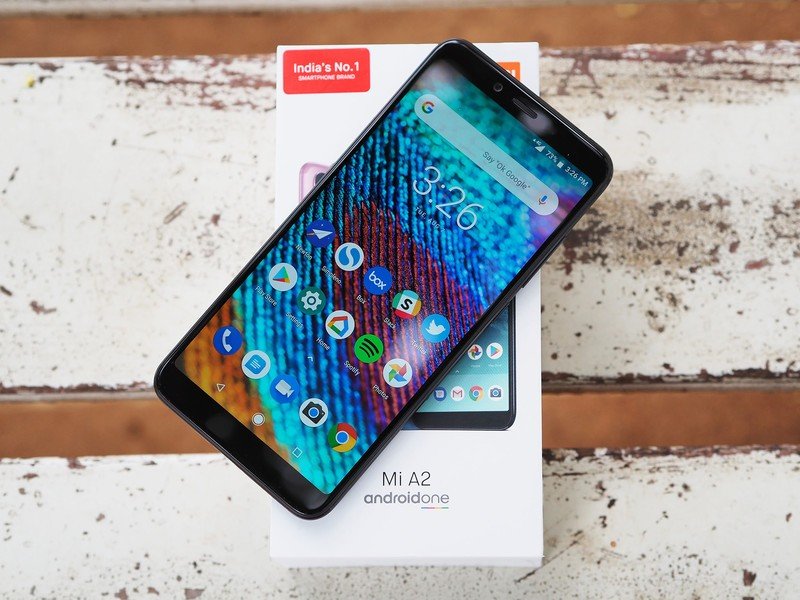
Should you buy it? Yes, with a caveat
If there's one thing Xiaomi has shown over the last four years, it's that it can beat expectations. I was sure that the Mi A2 would go up against the Nokia 7 Plus, but with Xiaomi launching the phone at ₹16,999 ($250) in India, it is targeting the Redmi Note 5 series instead. The Snapdragon 660 chipset makes it one of the fastest phones in this segment, and the camera holds its own against the likes of the Nokia 7 Plus.
While it excels at the hardware side of things, there are a few feature omissions that are puzzling. The lack of NFC makes it a non-starter in Western markets, and Xiaomi's decision to get rid of the 3.5mm jack and the MicroSD slot will prove to be divisive in India.
The Mi A2 will go up for sale in over 40 global markets, but it's in India where it will face the utmost scrutiny. Indian customers demand the absolute best hardware at the lowest possible cost, and it's for this reason that OnePlus was able to dethrone Samsung in the premium category. It's also the main reason why Xiaomi was able to rise up the ranks to become the second-largest handset manufacturer in the country.
The Mi A2 is missing a MicroSD slot, but the camera more than makes up for it.
The only way Xiaomi could have competed against the Nokia 7 Plus was if it introduced the Mi A2 at under the ₹20,000 figure, and that's exactly what it did. It managed to undercut HMD significantly, but in doing so, it lost out on features that ultimately made the Nokia 7 Plus a fan favorite.
Therefore, it makes more sense to compare the Mi A2 against the Redmi Note 5 Pro. Indian customers have come to like the customizability that MIUI offers and the 4000mAh battery on the Redmi Note 5 Pro runs rings around the Mi A2. However, the Mi A2 has much better cameras, and the Snapdragon 660 is faster than the Snapdragon 636.
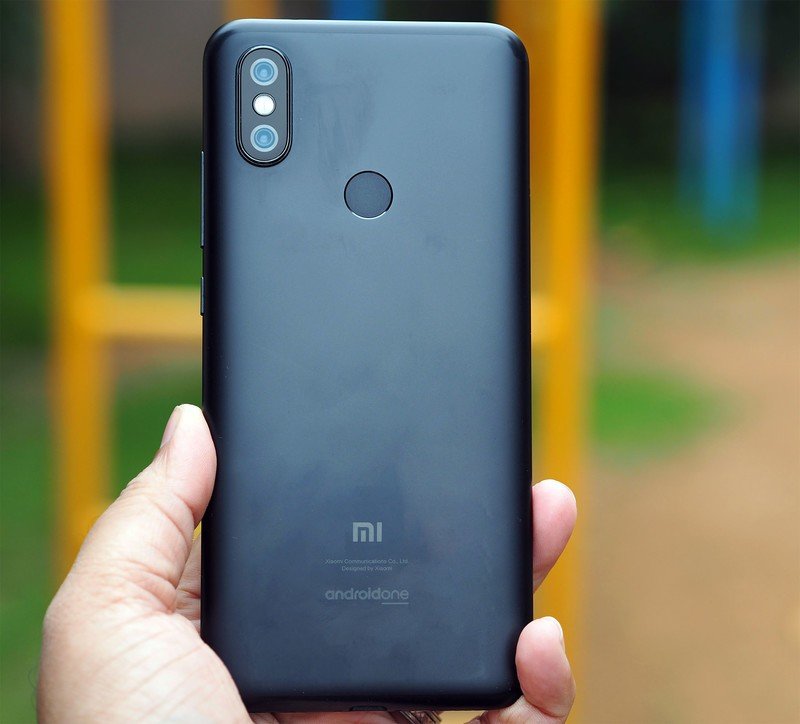
I haven't been this conflicted about a phone in a long time. On the one hand, I value clean software and an easy-to-use camera above all else, and in these areas, the Mi A2 absolutely delivers. And while I don't miss the MicroSD slot, 3.5mm jack — or even NFC for that matter — my use case doesn't align with that of Xiaomi's target audience. By leaving these features out, Xiaomi is ultimately putting the Mi A2 at a disadvantage next to other devices in this category.
But as I outlined above, the MicroSD slot isn't as major an omission to discount the Mi A2 entirely. It's an easy trade-off to make when you look at just how good the cameras are on a day-to-day use. At the end of the day, that makes the Mi A2 a standout device in this category.
If you can't get past the fact that the Mi A2 doesn't have a MicroSD slot or 3.5mm jack, fret not, for there are plenty of alternatives available. If performance is your primary criteria, the Honor Play is a decent option. Need a Xiaomi device that is packed with features? Look no further than the Redmi Note 5 Pro.
And even though it costs $130 more than the Mi A2, the Nokia 7 Plus continues to be a fabulous choice in the mid-range segment. It has a better design, a significantly larger battery, and comes with a MicroSD slot, NFC, dual VoLTE, and a 3.5mm jack as standard. The ₹25,999 ($380) asking price is more than justified when you look at the number of features on offer.
4 out of 5
There's plenty to like in the Mi A2. The Snapdragon 660 is a performance beast, the new cameras are astounding, and the phone is scheduled to get the Android Pie before the end of the year. If you don't mind the lack of MicroSD slot, 3.5mm jack, or NFC, it is a great option considering what it costs.
If you're interested in picking it up, the Mi A2 goes on sale starting August 16 on Amazon India.

Harish Jonnalagadda is Android Central's Senior Editor overseeing mobile coverage. In his current role, he leads the site's coverage of Chinese phone brands, networking products, and AV gear. He has been testing phones for over a decade, and has extensive experience in mobile hardware and the global semiconductor industry. Contact him on Twitter at @chunkynerd.
